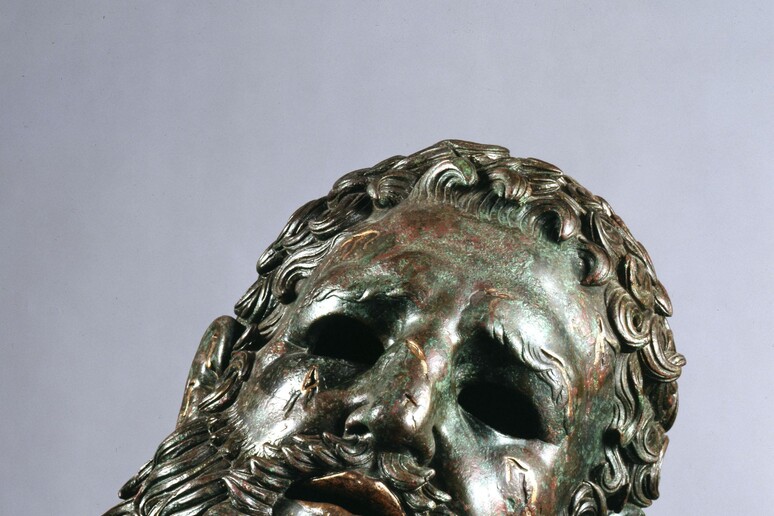The Greek masterpiece The Boxer has returned to Rome's Palazzo Massimo after a three-month loan to the Los Angeles Getty Museum as part of an exhibition on Hellenistic bronzes.
Welcoming it in the hall of the Museo Nazionale Romano was superintendent Francesco Prosperetti, museum director Rita Paris and the middle-weight boxing champion Nino Benvenuti, who - after kneeling before what is one of the few bronze sculptures of antiquity still in existence - said he was "ecstatic".
The questioning, amazed expression on the face of the
sculpture was seen first as it was lifted from a case that had
protected it during its journey back from Los Angeles. Then came
the powerful body, freed from the harnesses used to immobilize
it.
The technicians from the Montenovi company removed the
layers of wood that had kept the Hellenistic bronze sculpture
from moving during its transfer, monitored by sensors able to
constantly convey micro-climate conditions and any inclination
to restoration experts at the superintendent's office. During
the three-month exhibition, it was further protected by an
anti-seismic base and other safeguarding procedures.
The masterpiece is in good condition and was restored by
Olimpia Colicicchi in the 1980s, followed by maintenance work in
2005.
As soon as The Boxer was placed on its pedestal, the
modern-day champion Benvenuti almost bowed in paying homage to
the timeless symbol of "the quintessential sport of courage".
"I knelt down due to the emotion. You feel small in front
of him," the Italian boxer said in starting to explain some
elements of the sculpture and how they pertain to the sport.
He spoke about the cuts on the ears, for example, which let
blood out in order to prevent deformation of swollen tissues, as
well as the signs of where the body was hit, the knuckles on the
bandaged hands to protect the cartilage ("it hurts much worse
than a broken bone").
However, no one can explain the expression, the mystery of
that vigorous body that rotates on itself in a unique pose.
"It is a work of many mysteries within it," added
Prosperetti, noting that it had been found on the hillsides of
the Quirinal in 1885, buried deeply but surrounded by a safety
zone of sand.
The superintendent went on to say that "it is certainly a
Greek original that has resurfaced in recent times, like the
Bronzes of Riace - those from the sea, this from the land."
Less certain is the function of the 'hero' depicted,
possibly part of a mythological group and later part of the
Constantine Terme statuary group.
The masterpiece has been frequently requested for major
international exhibitions, where it always draws in thousands of
visitors. The Boxer, the undisputed icon of Palazzo Massimo,
director Rita Paris said, returned from Los Angeles without
going on to the third stop of the exhibition on Hellenistic
Bronzes, currently in Washington.
Romans and tourists were too disappointed when they did not
find the sculpture in its normal spot. Next year it will be
moved to the Museo Nazionale Romano, which is expected to be
able to highlight it even more.
ALL RIGHTS RESERVED © Copyright ANSA











